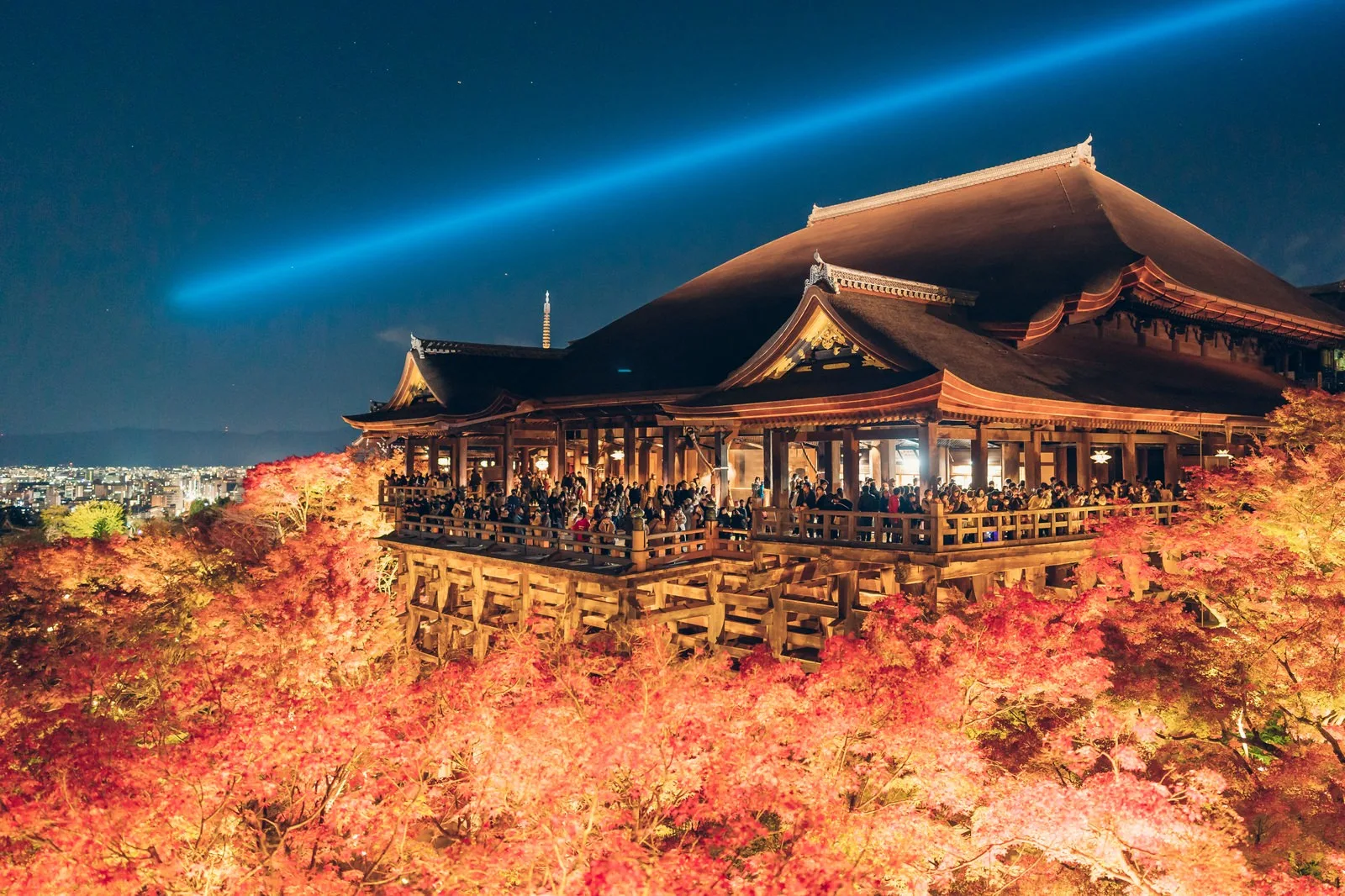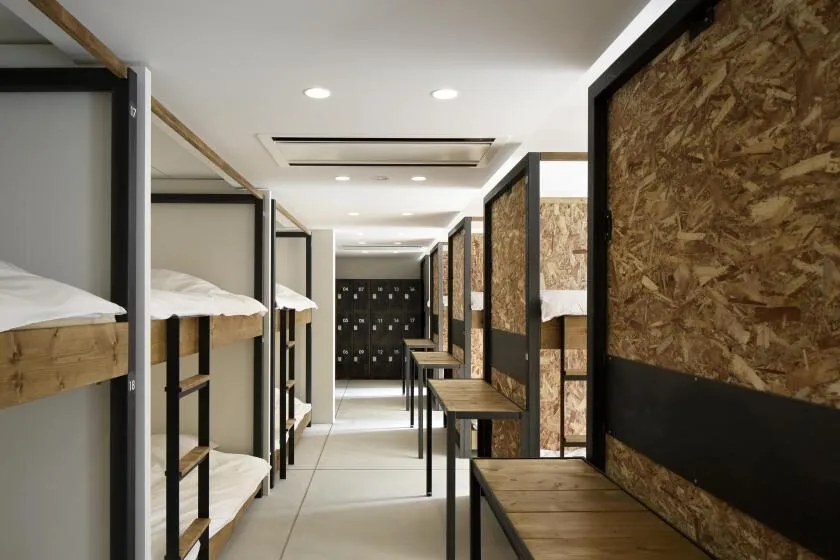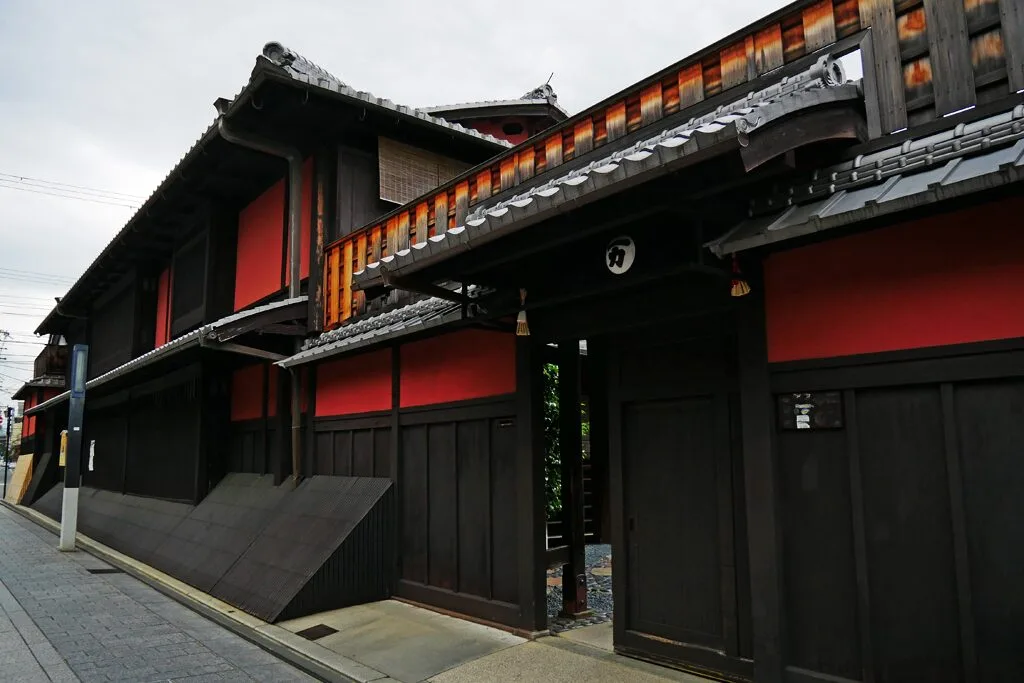Table of Contents
Introduction
Travelling to Kyoto on a shoestring doesn’t have to mean sacrificing the rich cultural experience the city has to offer.
In this comprehensive guide, we uncover hidden gems and budget-friendly options to ensure you make the most of your 10,000 yen (about $69 USD or 494.5 Chinese yuan)
From historic landmarks to delicious street food, Kyoto is waiting to be explored without breaking the bank.
Budget Friendly Accommodation and Kyoto Transportation Tips
Piece Hostel Kyoto
Start your Kyoto adventure with a stay at Piece Hostel Kyoto, which offers dormitory-style accommodation for 3,500 yen per night (approximately $24.15 USD or 173 Chinese yuan).
Nestled in the heart of Kyoto, a city that effortlessly balances tradition and modernity, Piece Hostel Kyoto is a beacon for travelers seeking a unique and immersive experience.
Here is the link for Piece Hostel Kyoto:(PIECE HOSTEL KYOTO)
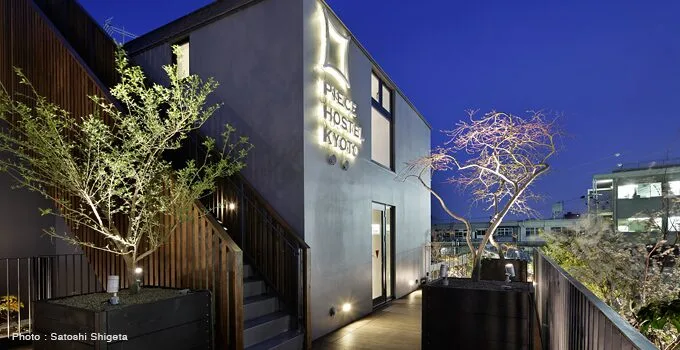
Welcoming atmosphere
From the moment you walk through the doors of Piece Hostel Kyoto, you will be greeted with a warm and welcoming atmosphere.
The minimalist yet cozy design of the hostel creates a sense of tranquility, making it an ideal retreat for those seeking a break from the bustling city outside.
Designed with the wanderer in mind, this hostel offers not only a comfortable stay, but also a glimpse into the rich cultural tapestry of Japan.
Japanese Aesthetics
One of the outstanding features of Piece Hostel Kyoto is its commitment to incorporating traditional Japanese aesthetics into its modern design.
The use of natural materials such as wood and paper pays homage to the country’s architectural heritage and offers guests an authentic experience that seamlessly blends old and new.
Comfortable accommodations
Piece Hostel Kyoto offers a variety of accommodations to meet the different needs of our guests.
Whether you choose a dormitory or a private room, each room is thoughtfully designed for comfort and functionality.
Clean lines, comfortable bedding, and plenty of storage space ensure that you can relax and unwind after a day of exploring Kyoto’s wonders.
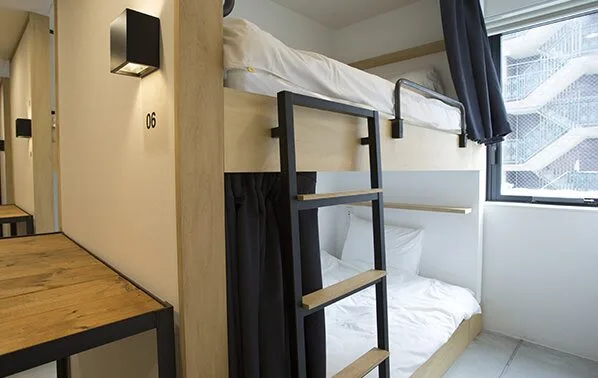

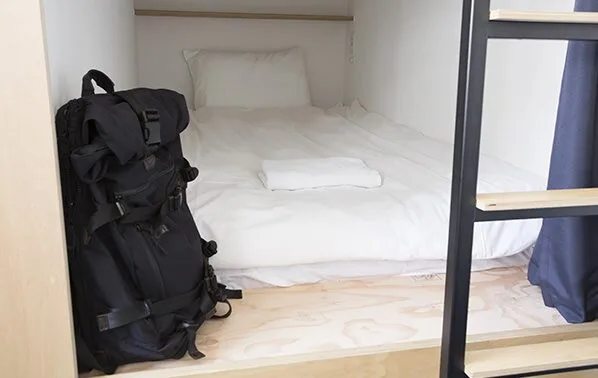
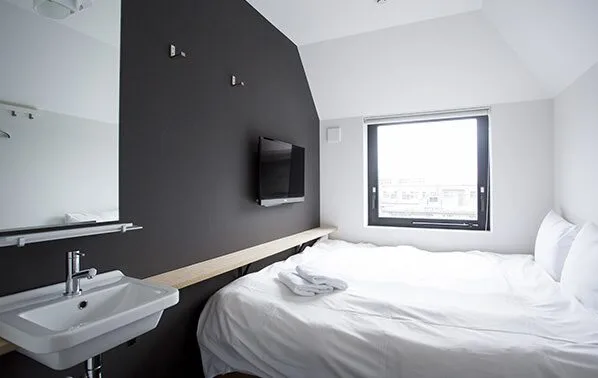
Cultural Interaction
What sets Piece Hostel Kyoto apart is its commitment to fostering cultural exchange among guests.
The common areas, such as the stylish lounge and common kitchen, serve as meeting points where travelers from all over the world can connect, share stories, and make new friends.
The hostel frequently hosts events and activities that showcase Japanese culture, providing an enriching experience for those who want to delve deeper into the local way of life.
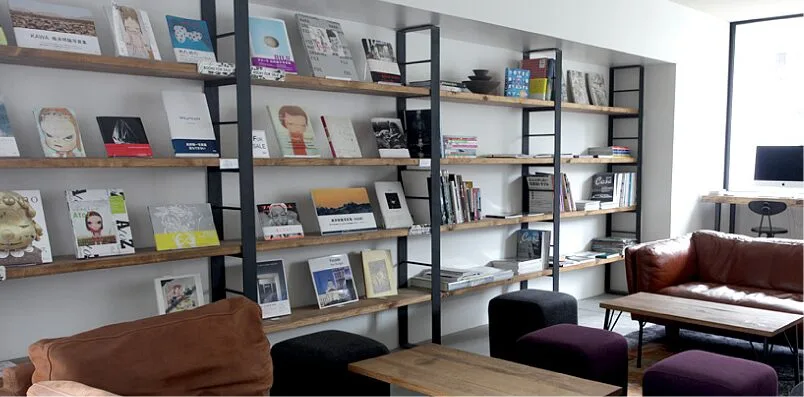
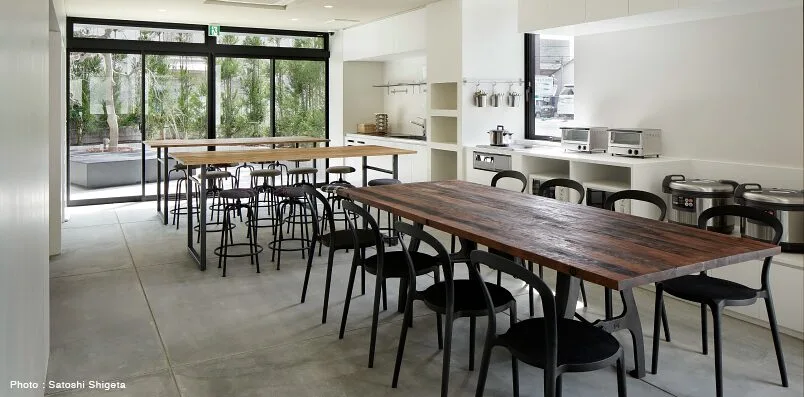
Location Convenience
The hostel is within walking distance of Nijo Castle, Kyoto Imperial Palace and Nishiki Market, allowing guests to immerse themselves in the city’s rich history and culinary delights.
Located in the vibrant Nakagyo Ward, Piece Hostel Kyoto is strategically located for easy access to the city’s iconic landmarks and attractions.
Innovative design
Beyond its commitment to tradition, Piece Hostel Kyoto also embraces innovation in its design.
The use of contemporary architectural elements and cutting-edge technology seamlessly integrates with the traditional aesthetic, creating a space that appeals to modern travelers while maintaining a strong connection to Kyoto’s cultural roots.
Experience local cuisine
No visit to Kyoto is complete without sampling its delicious cuisine, and Piece Hostel Kyoto makes sure that guests have the opportunity to indulge in the local flavors.
The hostel organizes culinary events and workshops where guests can try their hand at traditional Japanese cooking or simply enjoy authentic dishes prepared by local chefs.
Piece Hostel Kyoto is more than just a place to rest your head, it’s a destination in itself.
With its harmonious blend of Japanese tradition and modern comfort, coupled with a commitment to cultural exchange, this hostel offers foreign travelers a truly enriching experience in the heart of Kyoto.
Whether you’re a solo adventurer, a couple seeking a romantic getaway, or a group of friends on a cultural exploration, Piece Hostel Kyoto welcomes you with open arms and invites you to immerse yourself in the beauty of Japan’s ancient capital.
| PIECE HOSTEL KYOTO | |
|---|---|
| Address: | 21-1 Higashikujo Higashisannocho, Minami Ward, Kyoto, 601-8004 |
| Tel: | 075-693-7077 |
| HP: | PIECE HOSTEL KYOTO |
| Opening hours: | Check-in time: 15:00 Check-out time: 11:00 |
| Note: | – |
Kyoto Transportation Tips
Steeped in history and tradition, Kyoto attracts travelers from around the world with its captivating temples, vibrant markets, and timeless beauty.
Unlocking the city’s treasures, however, requires an efficient and economical means of transportation.
Enter the Kyoto City Transportation Pass – a day pass that unlocks the city’s vast network of subways and buses, allowing foreign travelers to explore with unparalleled convenience for just 1,100 yen(about $7.59 USD or 54.4 Chinese yuan).
You can buy this pass through this link.(Top page | 京都市交通局 (oneday-pass.kyoto))
Seamless mobility
The Kyoto City Transportation Pass provides unlimited one-day travel on all Kyoto City Subway and City Bus lines, as well as Kyoto Bus, Keihan Bus, and JR Bus (except for some lines).
This all-inclusive pass makes it easy to get around the city, saving you both time and money.
Whether you’re traversing the iconic Arashiyama district or making your way to the historic Fushimi Inari Shrine, this pass is your golden key to unlocking Kyoto’s wonders.
Strategic Savings
At a reasonable price of 1,100 yen for adults, the Kyoto City Transportation Pass is a strategic investment for any foreign traveler looking to make the most of their time in the city.
By cleverly combining subway and bus travel, you can optimize your itinerary and efficiently reach each destination on your must-see list without the hassle of purchasing individual tickets.
This not only simplifies your trip, but also adds significant savings to your travel budget.
Versatility in exploration
One of the key benefits of the Kyoto City Transportation Pass is its versatility.
With this pass, you have the flexibility to transfer seamlessly between subway and bus lines, ensuring that you can create an itinerary that suits your preferences and schedule.
Cultural connections
In addition to its practical benefits, the pass opens doors to cultural experiences.
Travelers using the Kyoto City Transportation Pass gain access to discounts and special offers at approximately 60 establishments in Kyoto City.
From traditional tea ceremonies to local craft workshops, this pass not only facilitates your physical journey, but also enhances your cultural immersion, allowing you to embrace the soul of Kyoto.
Practical tips for using the pass
To make the most of your Kyoto adventure with the Transportation Pass, consider planning your itinerary in advance.
Identify the main attractions you want to visit and make the most of the pass by strategically combining subway and bus routes.
The pass can be purchased at subway stations, bus terminals, and major transportation hubs, making it easily accessible to all travelers.
For foreign travelers seeking a seamless, cost-effective and culturally enriching experience in Kyoto, the Kyoto City Transportation Pass is a game changer.
Priced at 1,100 yen(about $7.59 USD or 54.4 Chinese yuan), this pass not only unlocks the city’s vast transportation network, but also opens doors to discounts at various cultural sites.
So embark on your Kyoto journey with the ultimate travel companion and let the city unfold its rich tapestry before you, effortlessly and economically.
Morning serenity at Kiyomizu-dera
Start your day at Kiyomizu-dera, a UNESCO World Heritage Site.
Nestled in the eastern hills of Kyoto, Kiyomizu-dera stands as a testament to the city’s rich cultural and spiritual heritage.
Known for its breathtaking wooden terrace that seems to float between the treetops, this UNESCO World Heritage Site is a must for foreign travelers seeking a deep connection to Japan’s history and traditions.
Admission is 400 yen (about $2.76 USD or 19.78 Chinese yuan).
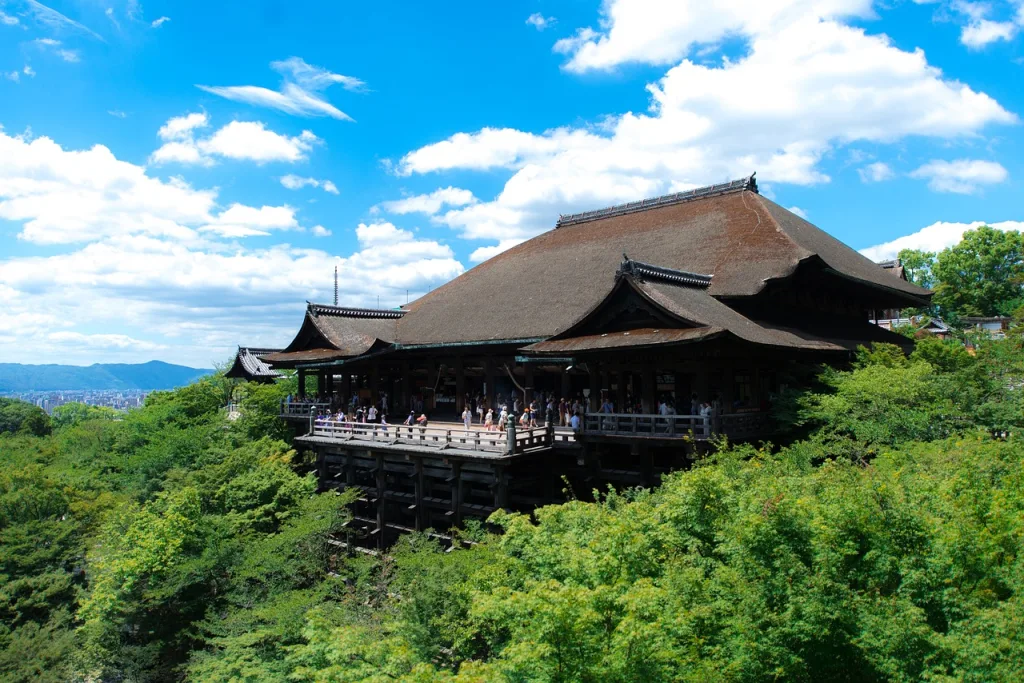
Historical Significance
Dating back to 778, Kiyomizu-dera has a storied past that resonates through its ancient halls and sacred grounds.
The current structure, however, dates from 1633, making it a masterpiece of early Edo architecture.
As you traverse its hallowed halls, you’ll feel the weight of centuries, each step steeped in the legacy of this iconic temple.
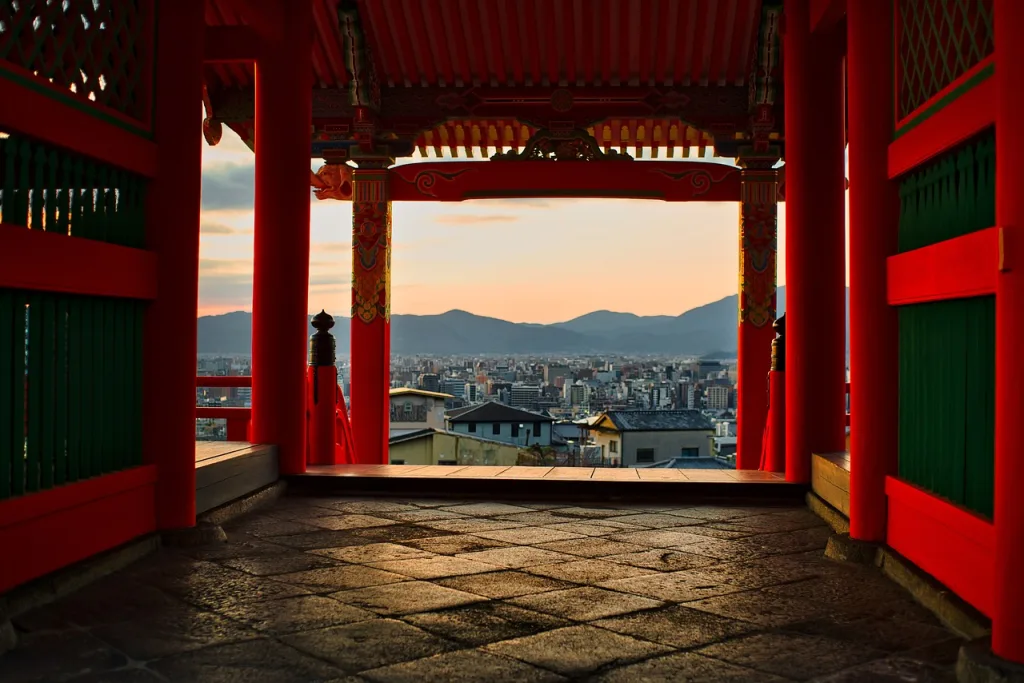
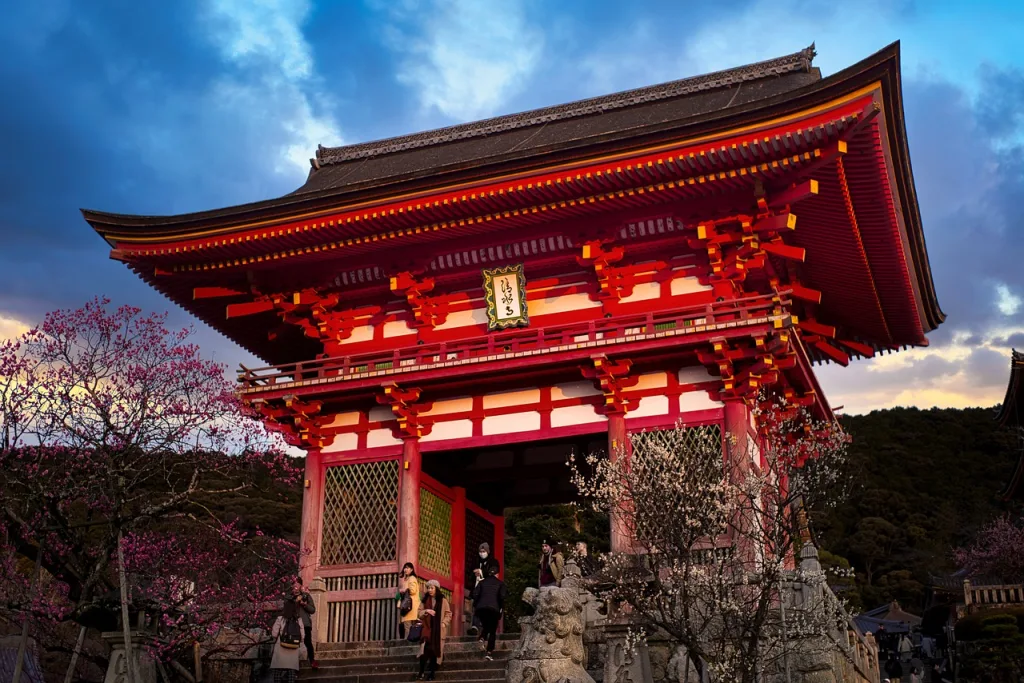
Panoramic views
The pièce de résistance of Kiyomizu-dera is undoubtedly its wooden terrace, known as the “Kiyomizu Stage“.
Extending from the main hall, the stage offers a panoramic view of Kyoto’s cityscape and surrounding forested hills, which is especially breathtaking during the cherry blossom season or the vibrant colors of autumn.
It’s a perfect place for foreign travelers to capture the essence of Kyoto’s natural beauty.
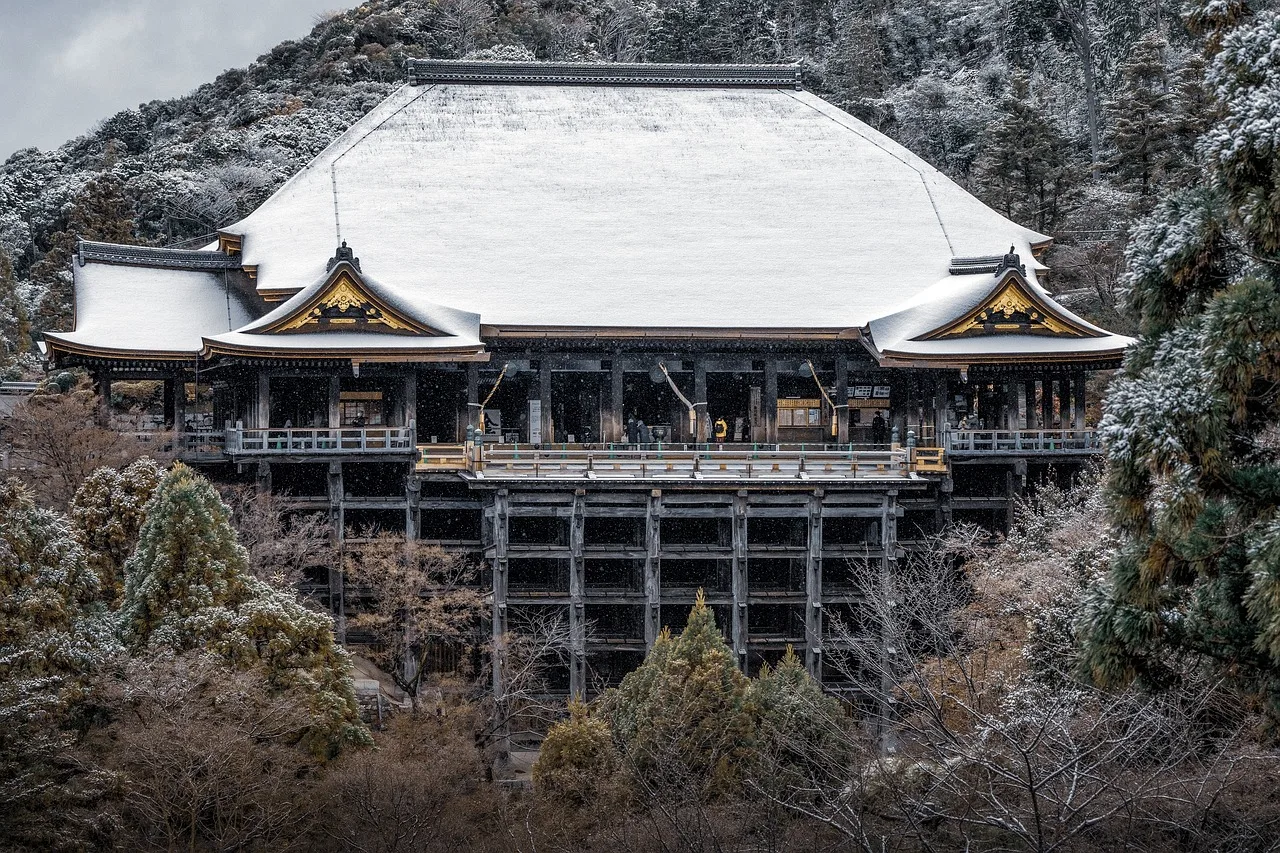
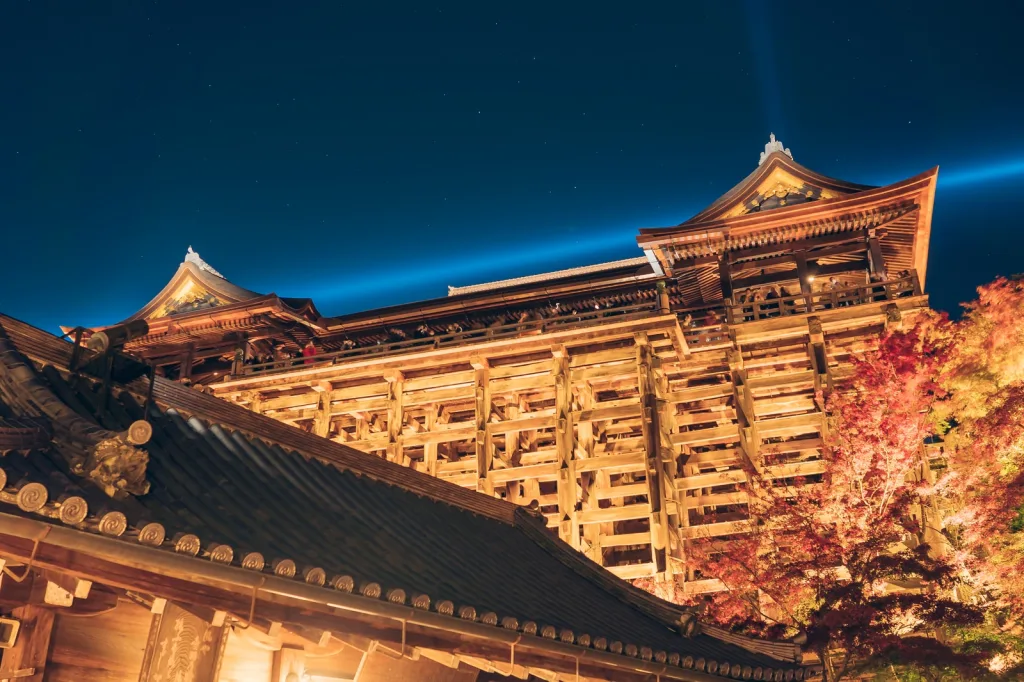
Sacred waters
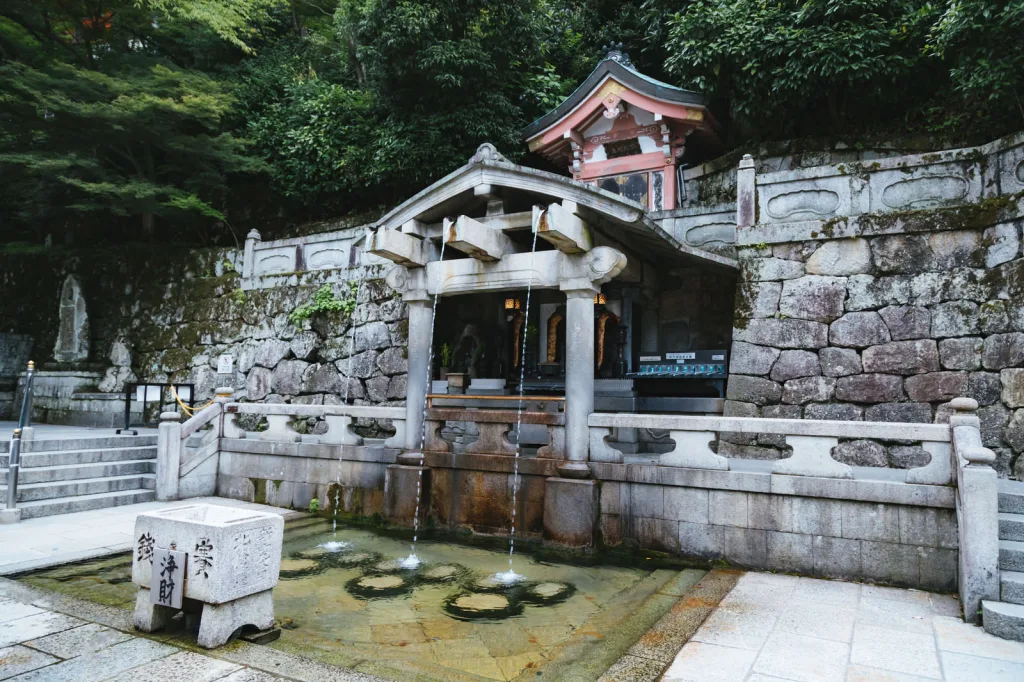
Kiyomizu-dera is home to Otowa Waterfall, where three streams of water cascade into a pond.
Each stream is said to bring a unique blessing – longevity, educational success, and a happy love life.
Visitors use long-handled cups to drink from the streams, carefully choosing which blessing they wish to receive.
This sacred ritual adds an air of mysticism to the Kiyomizu-dera experience.
Seasonal Splendor
One of the charms of Kiyomizu-dera is its ever-changing scenery throughout the seasons.
In spring, cherry blossoms bathe the temple in a sea of pink, while autumn paints the landscape in fiery hues.
The temple’s surroundings are meticulously landscaped, creating an immersive experience that evolves with the natural rhythm of Kyoto’s climate.
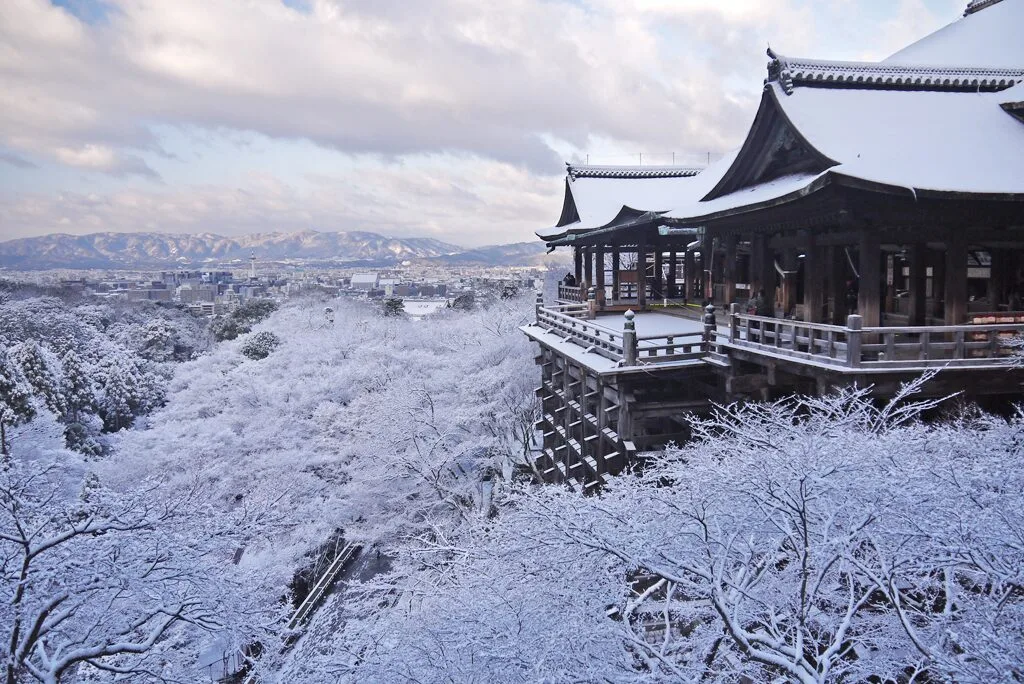
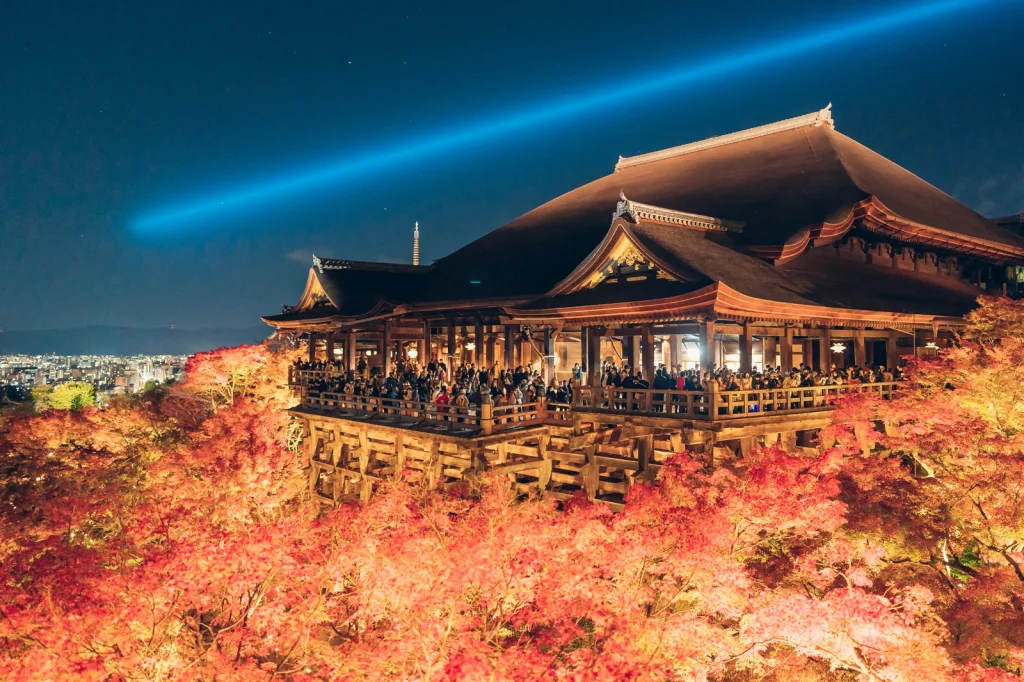
Cultural Immersion
Beyond its physical beauty, Kiyomizu-dera offers foreign travelers the opportunity to immerse themselves in Japanese Buddhist culture.
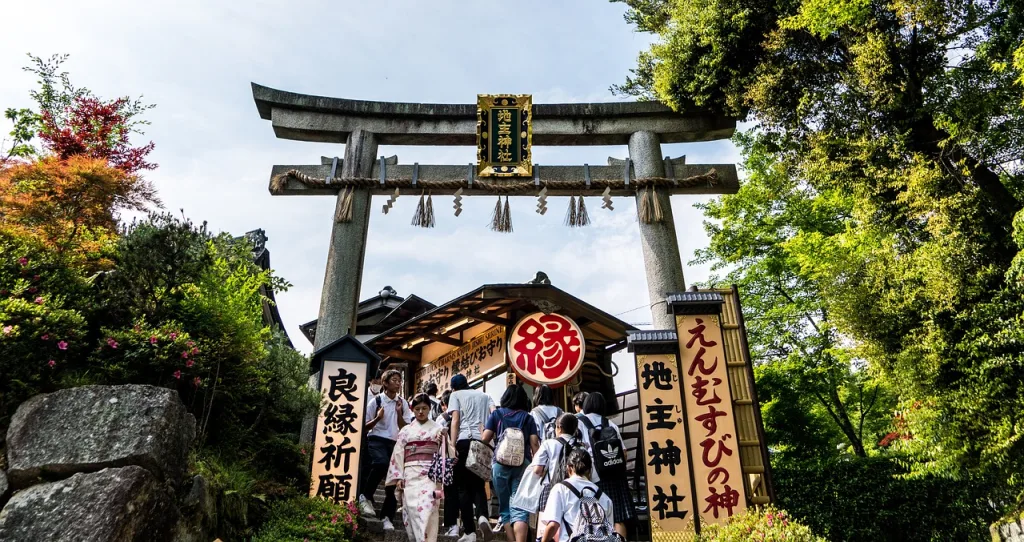
Explore the various halls dedicated to different deities, witness monks at prayer, and soak in the serene atmosphere that pervades the temple grounds.
The adjacent Jishu Shrine, dedicated to the deity of love and matchmaking, is a unique addition that adds an extra layer of cultural richness.
Access and Practical Tips
Located in the Higashiyama district, Kiyomizu-dera is easily accessible by bus or a scenic walk from downtown Kyoto.
To fully enjoy your visit, consider arriving early to avoid crowds, especially during peak tourist seasons.
Admission fees are modest, and the experience is well worth the investment.
Kiyomizu-dera is a symbol of Kyoto’s spiritual and architectural splendor.
For foreign travelers, a visit to this iconic temple offers not only a glimpse into Japan’s rich history, but also an immersive journey into the heart of its cultural and religious traditions.
So, step onto the revered wooden terrace, drink from the sacred waters, and let the centuries-old aura of Kiyomizu-dera transport you to a realm where past and present seamlessly intertwine.
| Kiyomizu-dera | |
|---|---|
| Address: | 1 Chome-294 Kiyomizu, Higashiyama Ward, Kyoto, 605-0862 |
| Tel: | 075-551-1234 |
| HP: | 音羽山 清水寺 (kiyomizudera.or.jp) |
| Opening hours: | 6:00-18:00 |
| Note: | – |
Nishiki Market – a culinary adventure
Head to Nishiki Market for a budget lunch.
Nishiki Market, nestled in the heart of Kyoto, Japan, is a vibrant and bustling marketplace that offers a sensory feast for foreign travelers.
Known as “Kyoto’s Kitchen,” this historic market has been a culinary hub for locals and visitors alike for centuries.
Also, try affordable and delicious street food such as takoyaki (octopus balls) and yuba (tofu skin) skewers, which cost around 1,000 yen (about $6.9 USD or 49.45 Chinese yuan).
In this section, we’ll explore the rich tapestry of flavors, aromas, and experiences that make Nishiki Market a must-visit destination for anyone exploring Kyoto.
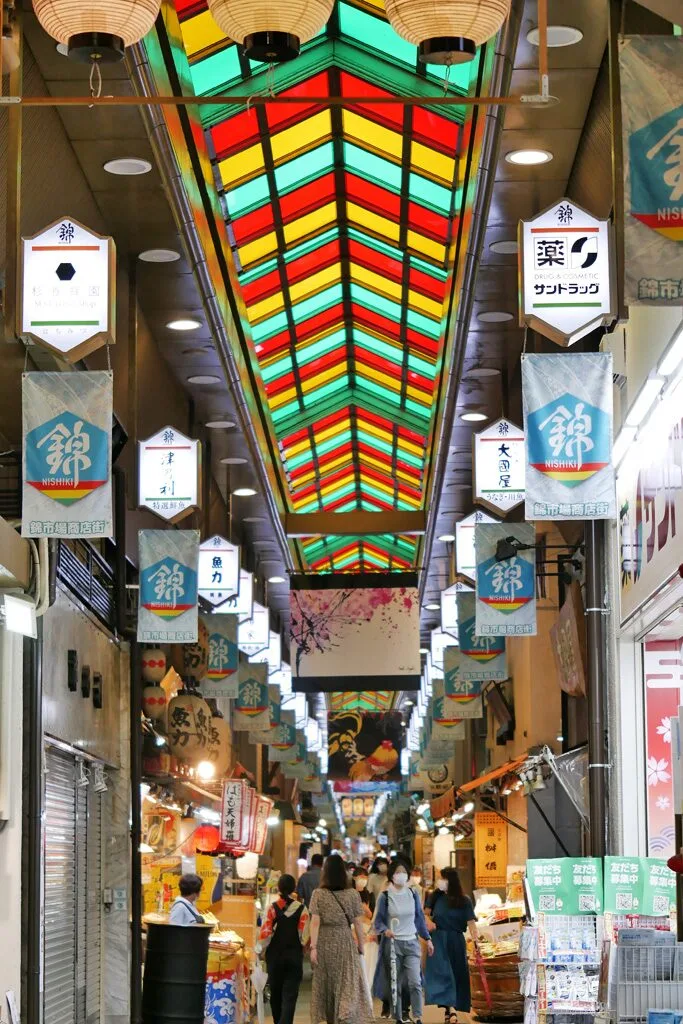
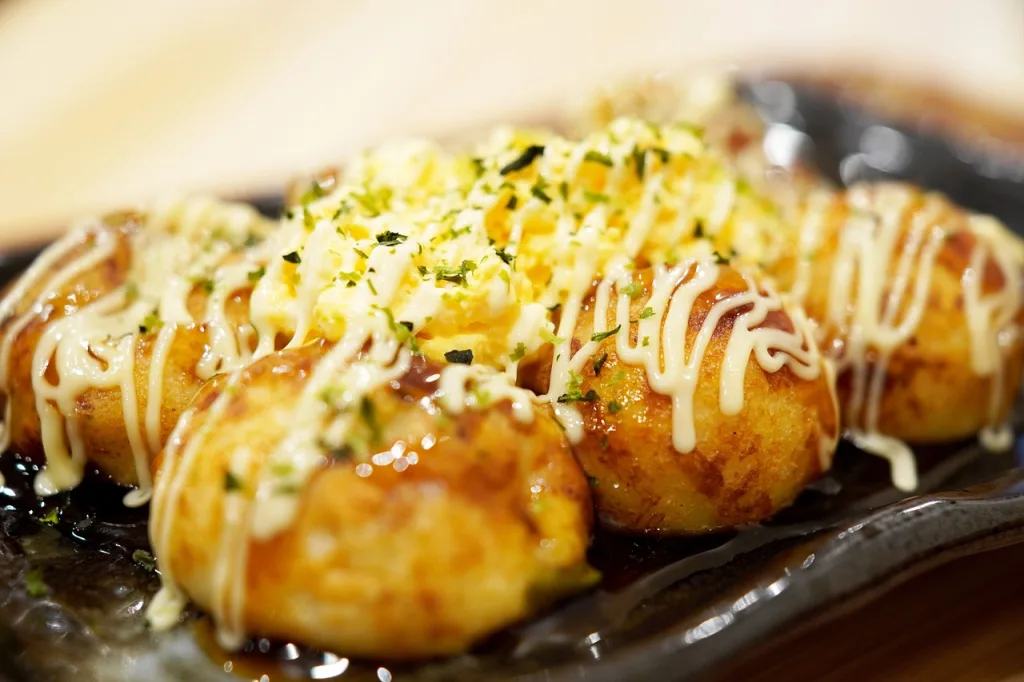
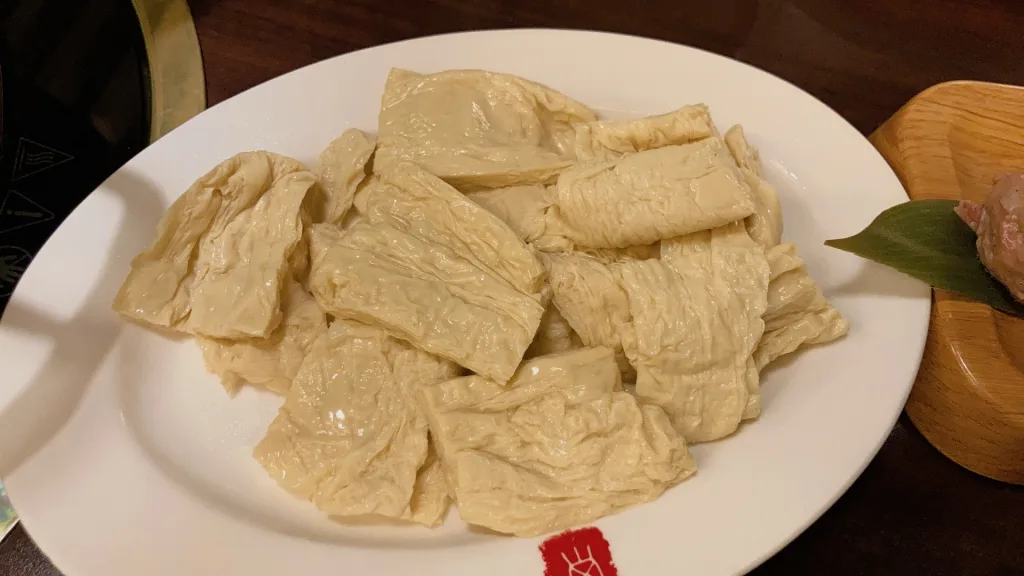
The Atmosphere
As you enter Nishiki Market, you’ll be enveloped in an atmosphere that seamlessly blends tradition and modernity.
The narrow, covered streets are lined with stalls, each offering a unique glimpse into Japanese culinary culture.
The lively chatter of the vendors, the sizzle of the grills, and the tantalizing aromas of fresh ingredients create an immersive experience that captivates the senses.
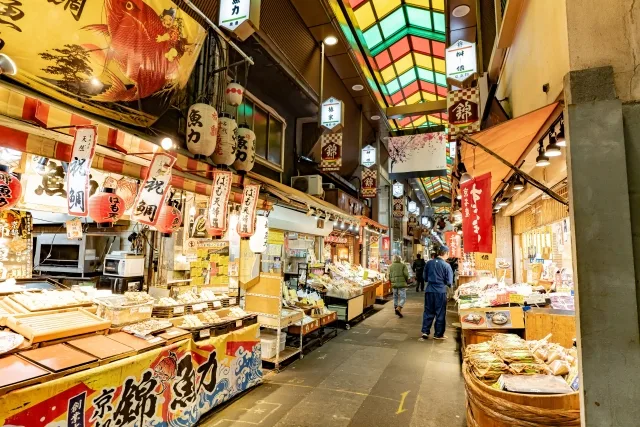
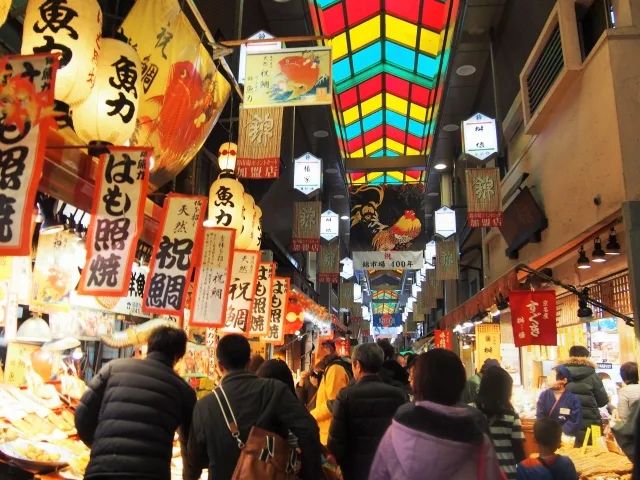
Culinary delights
Nishiki Market is a food lover’s paradise, offering a wide variety of traditional Japanese delicacies.
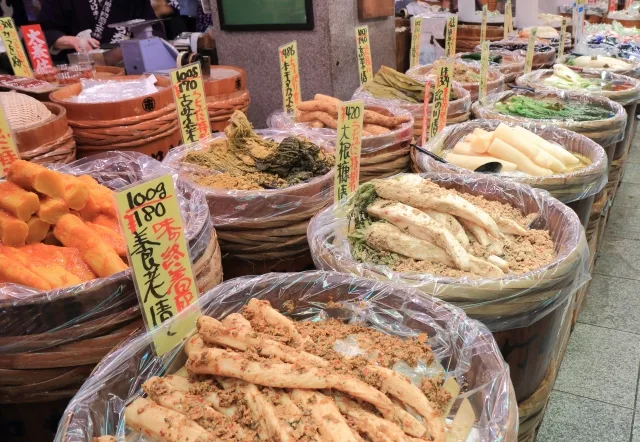
From local snacks to gourmet treats, there’s something for every palate.
Don’t miss the opportunity to taste Kyoto’s famous pickles, known as “tsukemono,” or sample fresh seafood at one of the many sushi stalls.
Indulge in skewers of yakitori, grilled chicken, or enjoy the unique flavors of Kyoto-style kaiseki cuisine.
Local Specialties
One of the highlights of Nishiki Market is the chance to discover Kyoto’s unique culinary specialties.
Yuba, or tofu skin, is a local delicacy that features prominently in various dishes, offering a delicate texture and mild flavor.
Matcha-flavored treats, such as matcha-flavored mochi or matcha-infused sweets, are also abundant, offering a taste of Kyoto’s renowned green tea culture.
Interactive Culinary Experiences
Nishiki Market isn’t just about tasting delicious food; it’s also an opportunity for interactive culinary experiences.
Many booths allow visitors to watch skilled artisans at work, whether it’s making traditional Japanese sweets or preparing fresh tempura.
Take the time to interact with the vendors, ask questions, and gain insight into the cultural significance of each dish.
Shopping for Souvenirs
In addition to culinary delights, Nishiki Market is an excellent place to shop for unique souvenirs and gifts.
Explore stalls selling local handicrafts, traditional kitchen utensils and Japanese spices.
The market’s vibrant atmosphere and array of colorful goods make for an enjoyable shopping experience, allowing you to bring a piece of Kyoto’s vibrant culture back home.
Practical Tips for Foreign Travelers
Navigating the Nishiki market can be an adventure in itself, so here are some practical tips for foreign travelers:
- Cash is king: While some vendors may accept credit cards, it’s best to carry cash for smaller purchases.
- Sampling etiquette: It’s common to sample a variety of foods, but be mindful of queues and try to make purchases if you’re sampling extensively.
- English-friendly stalls: Look for stalls with English signage and staff who can assist you in English, making your culinary exploration more accessible.
Nishiki Market stands as a testament to Kyoto’s rich culinary heritage, offering foreign travelers an unforgettable journey through the flavors and traditions of Japan.
Whether you’re a food enthusiast or a curious explorer, a visit to Nishiki Market promises a delightful immersion into the heart of Kyoto’s gastronomic culture.
Don’t miss the chance to savor, explore, and create lasting memories in this enchanting marketplace.
| Nishiki Market | |
|---|---|
| Address: | Nakagyo Ward, Kyoto, 604-8055 |
| Tel: | 075-211-3882 |
| HP: | 京都錦市場商店街 (kyoto-nishiki.or.jp) |
| Opening hours: | – |
| Note: | – |
Afternoon exploration of the Gion district
Located in the heart of Kyoto, the Gion district is a timeless symbol of Japan’s cultural richness and traditional beauty.
For foreign travelers seeking an authentic and tranquil experience, an afternoon exploration of Gion offers a unique glimpse into the city’s geisha culture, historic streets, and hidden gems.
In this section, we will guide you through the enchanting maze of Gion, unveiling its elegance and inviting you to enjoy the tranquility of this iconic district.
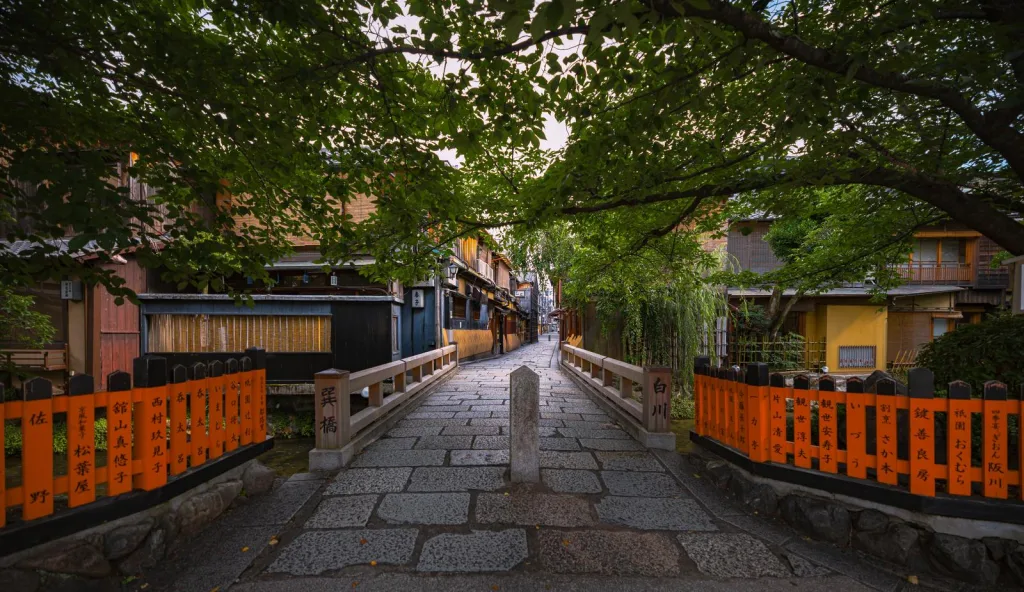
Geisha Culture
Gion is known as the epicenter of Japan’s geisha culture, and a leisurely afternoon stroll offers a front row seat to this fascinating world.
As you stroll the cobblestone streets, keep an eye out for geisha and maiko (apprentice geisha) as they gracefully make their way to appointments.
Capture the essence of this ancient tradition by visiting teahouses where geisha entertain guests with dance, music and conversation.
Historic Architecture
The Gion district is a living canvas of historic architecture, with preserved machiya (traditional wooden townhouses) lining the streets.
Take a moment to admire the intricate lattice work, wooden facades, and delicate gardens that evoke a sense of old-world charm.
Some machiya have been transformed into teahouses, shops, or exclusive ryokans (traditional inns), offering a chance to step back in time.
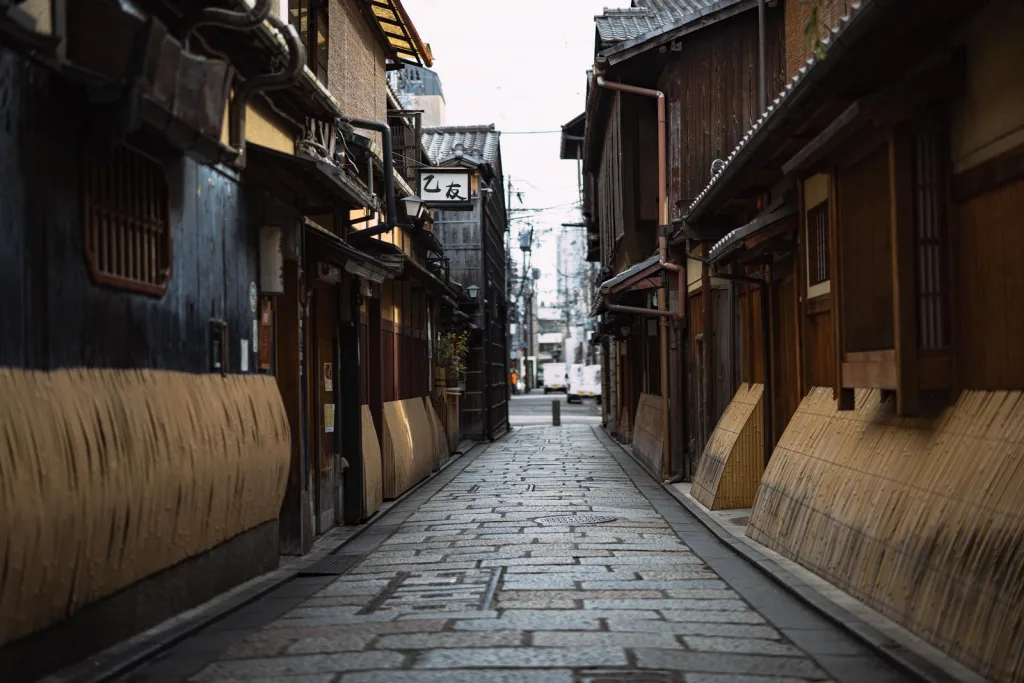
Yasaka Shrine
No visit to Gion is complete without exploring Yasaka Shrine, a sacred site dating back to the 7th century.
As you approach the vermilion gate, you’ll feel a sense of spiritual tranquility.
The shrine grounds, decorated with lanterns, offer a peaceful retreat from the bustling streets.
Take your time to explore the various structures, pray for good fortune, and soak in the serene atmosphere.
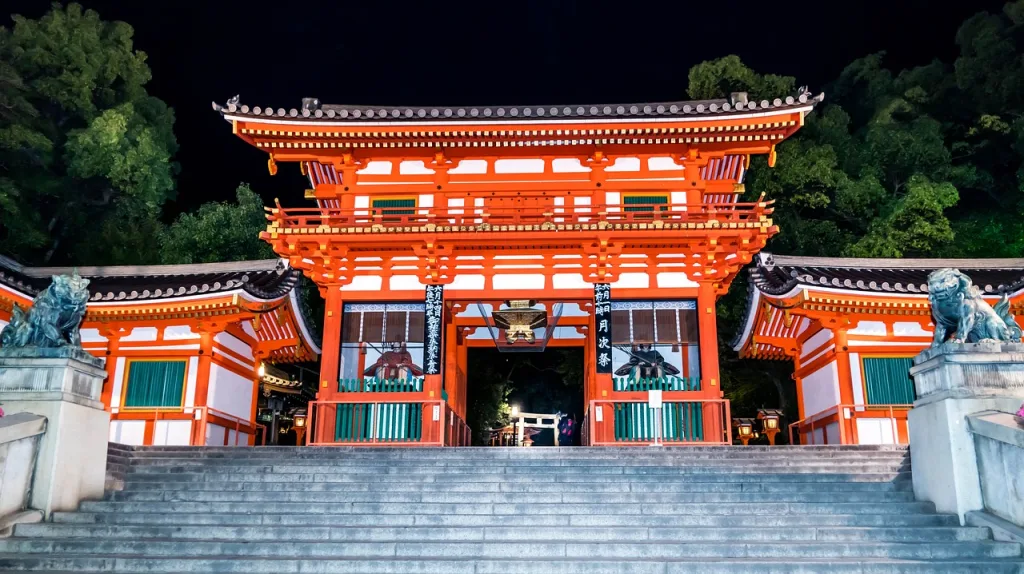
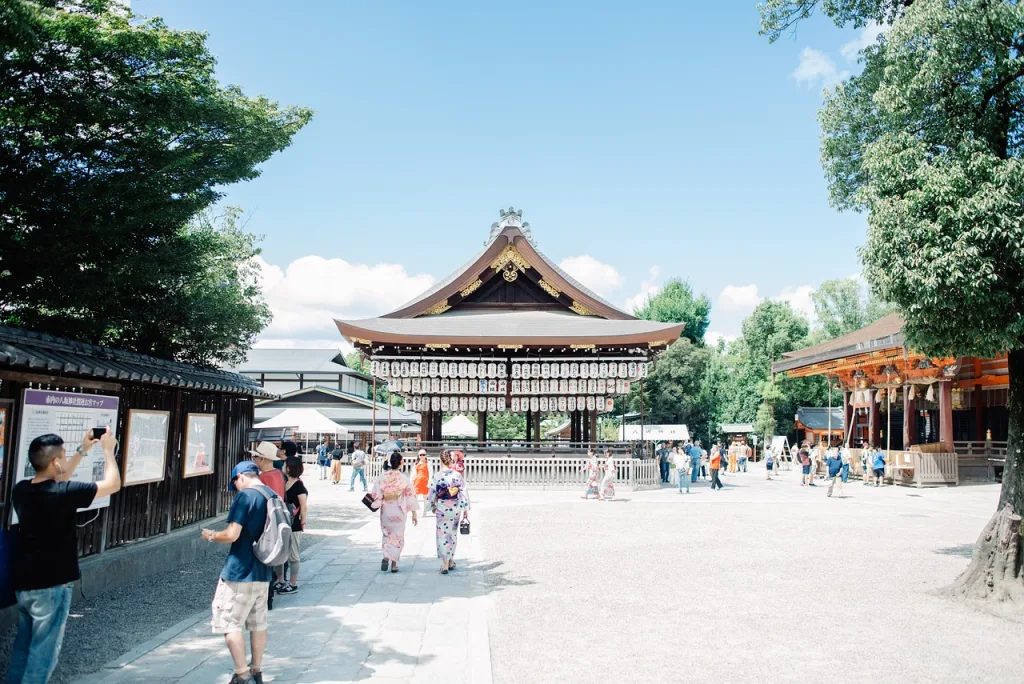
Hanamikoji Street
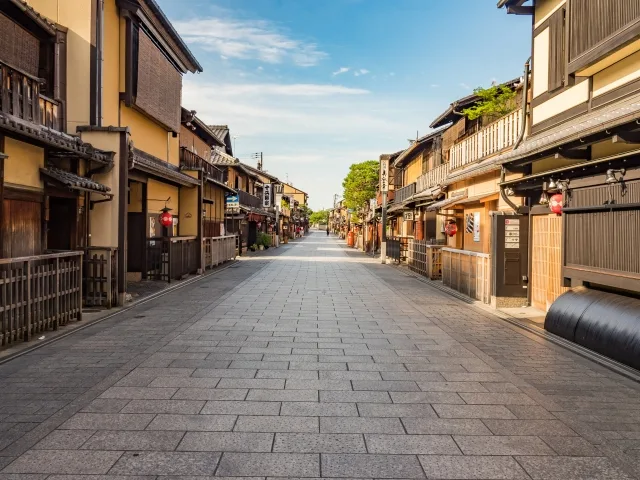
One of Gion’s most iconic streets, Hanamikoji Street beckons with its historic charm and cultural significance.
Lined with machiya, the street offers a postcard-perfect view of Kyoto’s traditional architecture.
Explore the boutiques, art galleries and exclusive restaurants that add a modern touch to the historic setting.
Hanamikoji Street really comes alive at dusk, when lanterns light the way and create a magical atmosphere.
Tea Houses and Traditional Cuisine
Gion is a haven for those seeking an authentic taste of Kyoto’s traditional cuisine.
Indulge in a matcha tea experience at one of the historic teahouses or enjoy kaiseki, a multi-course meal that showcases the region’s seasonal ingredients.
Many establishments in Gion take pride in preserving culinary traditions, allowing you to savor the flavors of Kyoto’s rich gastronomic heritage.
Practical Tips for Foreign Travelers
- Respectful Photography: While Gion is a picturesque district, it’s essential to be respectful when photographing geisha and maiko. Avoid intrusive photography and prioritize the privacy and dignity of these cultural icons.
- Footwear Etiquette: Some establishments in Gion may request that you remove your shoes before entering, so it’s advisable to wear comfortable and easily removable footwear.
- Evening Illumination: To witness the enchanting transformation of Gion at dusk, plan your exploration to extend into the evening when lanterns cast a warm glow over the district.
An afternoon exploration of Gion district offers foreign travelers a serene journey through Kyoto’s cultural heart.
From meeting geisha in the old streets to immersing yourself in the historic ambiance of the Yasaka Shrine, Gion is a treasure trove of experiences waiting to be discovered.
As you meander through the timeless beauty of Gion, you’ll be enchanted by the seamless blend of tradition and modernity in this iconic Japanese district.
Sunset at Fushimi Inari Taisha
As the day draws to a close, head to Fushimi Inari Taisha to see the iconic Torii Gates during the golden hour.
Admission is free, so you can soak up the mystical atmosphere without spending a yen.
Nestled at the base of Mt. Inari in Kyoto, Japan, Fushimi Inari Taisha is an iconic Shinto shrine known for its vibrant Torii gate and serene surroundings.
While the shrine is an intriguing destination at any time of day, experiencing the sunset at Fushimi Inari Taisha reveals a different kind of magic.
In this section, we’ll guide foreign travelers through the enchanting experience of watching the sun sink below the horizon, casting a warm glow over the myriad Torii gates that adorn the sacred path.

Golden Hour Illumination
Arriving at Fushimi Inari Taisha in the late afternoon sets the stage for a breathtaking Golden Hour experience.
As the sun begins its descent, the vermilion Torii gates that line the path up the sacred Mount Inari are bathed in a warm, golden glow.
The interplay of light and shadow creates a mesmerizing atmosphere, transforming the already picturesque setting into a canvas of ethereal beauty.
Cross the Torii Path
Take the path that winds up the mountain and through the iconic Torii gates.
The soft, warm hues of the sunset transform the experience into a peaceful and contemplative journey.
Each gate, donated by individuals and corporations as a symbol of prosperity and good fortune, becomes more enchanting as the sunlight filters through the vermilion corridors.
Quiet moments of reflection
As you ascend the trail, take a moment to pause and reflect.
The atmosphere at Fushimi Inari Taisha at sunset fosters a sense of tranquility, allowing foreign travelers to connect with the spiritual energy that permeates the shrine.
The surrounding nature, with its lush greenery and occasional glimpses of the city below, provides a backdrop that enhances the meditative quality of the experience.
Photographic opportunities
The sunset at Fushimi Inari Taisha provides an ideal opportunity for foreign travelers to take stunning photographs.
The soft, warm light enhances the intricate details of the Torii gates, creating a visual feast for photography enthusiasts.
The changing colors of the sky, from oranges and pinks to deep purples, add a dynamic element to images captured during this magical time.
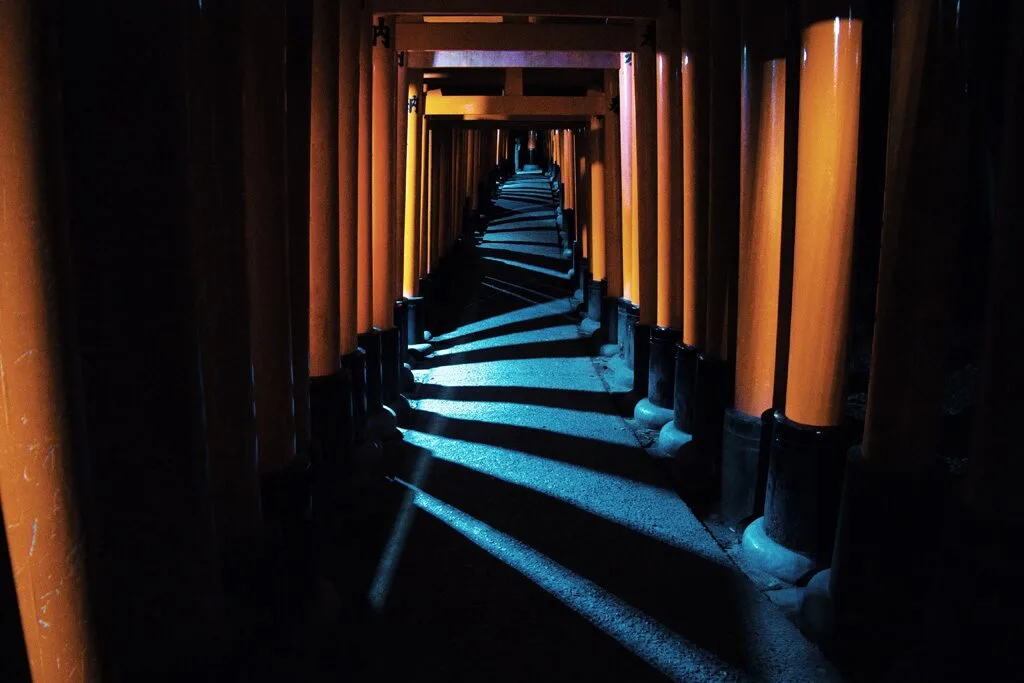
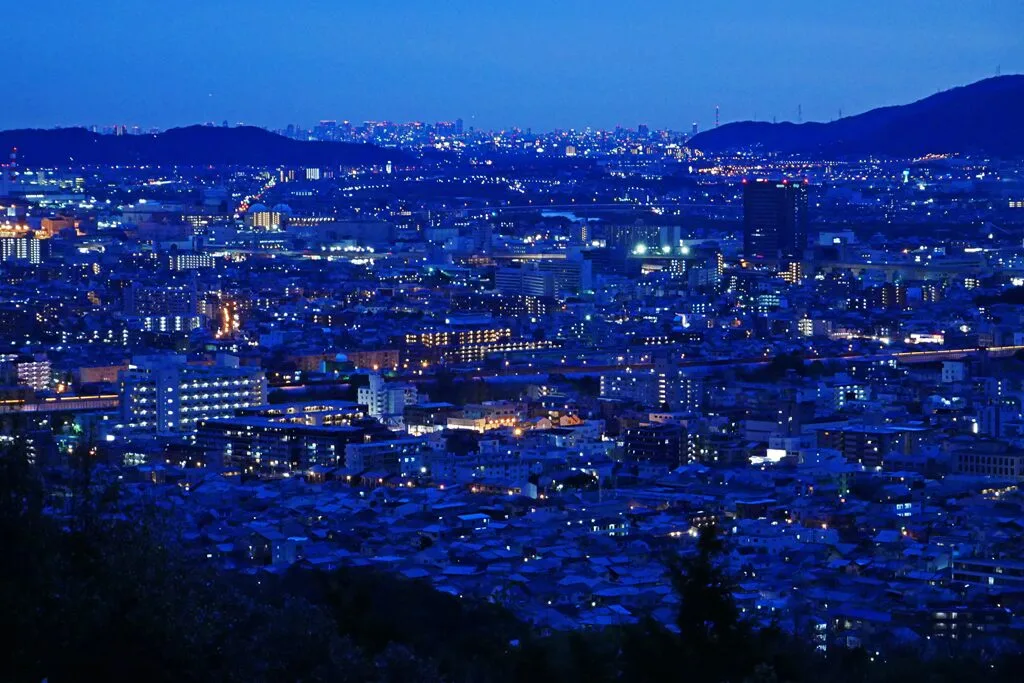
Evening Illumination
As the sun dips below the horizon, the shrine’s lanterns come to life, casting a soft glow along the path.
The transition from daylight to evening illumination adds another layer of charm to Fushimi Inari Taisha, creating an otherworldly atmosphere that captivates the senses.
Practical tips for international travelers
- Timing is key: Aim to arrive at Fushimi Inari Taisha a few hours before sunset to allow time for exploration and to find the perfect vantage point.
- Comfortable footwear: The trail can be steep in places, so comfortable footwear is recommended for the climb.
- Respectful behavior: Remember to be respectful of the sacred environment and other visitors. Keep the noise level to a minimum and avoid disturbing the serene atmosphere.
Experiencing the sunset at the Fushimi Inari Taisha is a magical journey that transcends the physical beauty of the Torii Gates.
For foreign travelers, it offers a unique opportunity to immerse themselves in the spiritual and visual wonders of this iconic shrine.
As the sunlight bathes the vermilion gates in a golden glow, Fushimi Inari Taisha at sunset becomes a place where time seems to stand still, inviting travelers to embrace tranquility and create lasting memories in the heart of Kyoto.
| Fushimi Inari Taisha | |
|---|---|
| Address: | 68 Fukakusa Yabunouchicho, Fushimi Ward, Kyoto, 612-0882 |
| Tel: | 075-641-7331 |
| HP: | 伏見稲荷大社 (inari.jp) |
| Opening hours: | Open 24 hours |
| Note: | – |
Dinner at Menbakaichidai
End your day with a memorable dinner at Menbakaichidai, famous for its ‘fire ramen‘.
A bowl of this unique ramen experience costs around 2,000 yen (about $13.8 USD or 98.9 Chinese yuan).
For foreign travelers seeking a dining experience that’s as exciting as it is delicious, Menbakaichidai in Kyoto, Japan, offers a fiery spectacle that’s hard to forget.
Known for its flaming ramen, this unique restaurant takes dining to a whole new level.
In this section, we’ll delve into the exhilarating dining experience that awaits those willing to try the fiery delights at Menbakaichidai.
The Flaming Ramen Show
As soon as you enter Menbakaichidai, you’ll feel the anticipation in the air.
The restaurant is known for its signature dish, “Fire Ramen,” where skilled chefs set a bowl of ramen ablaze before your very eyes.
The theatrical performance begins when the chef pours scallion oil over the ramen, creating a burst of flames that dance across the bowl, infusing the noodles with a smoky aroma.
Enjoy the culinary artistry
Beyond the fiery spectacle, Menbakaichidai takes pride in serving a delicious and hearty bowl of ramen.
The broth is rich and flavorful, complemented by perfectly cooked noodles and a choice of toppings.
The scallion oil, which contributes to the flaming display, adds a unique depth of flavor to the ramen, creating a memorable culinary experience for foreign travelers.
Interactive Dining
Dinner at Menbakaichidai is more than just a meal; it’s an interactive dining experience.
The chefs engage with guests, explaining the ramen preparation process and making sure everyone has a front row seat to the flaming show.
This immersive experience adds an extra layer of enjoyment to the dining experience, making it a perfect choice for those looking to combine entertainment with their meal.
Photogenic delights
The flaming ramen at Menbakaichidai is not only a feast for the palate, but also a visual delight that begs to be captured on camera.
The play of flames, the vibrant colors of the ramen, and the focused expertise of the chefs create a photogenic experience that out-of-towners will want to share with friends and family.
Practical tips for international travelers
- Reservations are recommended: Given the popularity of Menbakaichidai, especially during dinner hours, it’s advisable to make reservations to secure your seat and avoid long waits.
- Prepare for the heat: While the flaming ramen adds visual flair, it also raises the temperature of the dish. Be careful and allow the noodles to cool for a moment before diving in.
- Explore the menu: While the Fire Ramen is the star of the show, Menbakaichidai offers a variety of ramen options, allowing diners to customize their experience based on personal preference.
Dining at Menbakaichidai is not just a meal; it’s an exciting and flavorful experience that captures the essence of Japanese culinary innovation.
For foreign travelers looking for an unforgettable and Instagram-worthy dining adventure, Menbakaichidai delivers a fiery feast that engages the senses and leaves a lasting impression.
From the dramatic flames to the savory delights of ramen, this Kyoto gem promises an unforgettable evening of culinary excitement.
| Menbaka Fire Ramen | |
|---|---|
| Address: | 757-2 Minamiiseyacho, Kamigyo Ward, Kyoto, 602-8153 |
| Tel: | 075-812-5818 |
| HP: | Menbaka | Fire Ramen Kyoto Restaurant |
| Opening hours: | 11:00–15:00, 17:00-21:00 |
| Note: | Closed on Tuesday |
Conclusion
In conclusion, exploring Kyoto on a budget of 10,000 yen is not only possible, but can lead to a fulfilling and immersive experience.
Let’s summarise the costs:
- Accommodation (2 nights): 7,000 yen
- Transport (bus pass) 1,100 yen
- Admission to Kiyomizu-dera: 400 yen
- Nishiki market lunch: 1,000 yen
- Menbakaichidai dinner: 2,000 yen
- Total: 11,500 yen (about $79.35 USD or 568.67 Chinese yuan)
With careful planning and an understanding of budget-friendly options, Kyoto’s cultural wonders are within reach of even the most frugal traveller.
Enjoy your budget adventure in this fascinating city!
